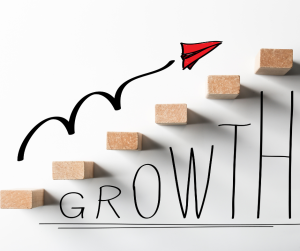If you have just started a small business, or you feel like your big business is stuck, it is important to understand the five stages of business growth. By understanding these stages, you can identify where your business stands and what you need to do to continue to grow. Additionally, understanding the stages can help you be more prepared if you are still thinking about starting a new business.
The five stages of business growth include existence, survival, success, take-off, and resource maturity. In this article, you will learn all you need to know about the phases to help your business grow and thrive.
Stage 1: Existence
Also known as the start-up phase, stage 1 is at the very beginning of a business. In this stage, the owner manages the operations or performs all important operating activities. Additionally, if there are no other investors, the owner is often the one funding the whole venture. In this stage, entrepreneurs will do market research to create a business plan. This plan will allow the business owner to properly manage funds and understand the upfront cost of running the business.
Your business is still trying to acquire new customers during the existence stage. While the business might have some revenue, there is not much in terms of profits. To get through this stage, you should find ways for raising money or finding investors to ensure you will have the funds to bring your vision to life. Additionally, businesses last longer if there is proper management of funds. Therefore, you should quickly learn to manage your business’s finances as a business owner. You will learn that finding the perfect balance between having the right amount of funds and not having any capital sitting idle is not easy.
Stage 2: Survival
After the existence stage, a business has already proven that it is a viable brand. In the survival stage, the business has found a market for its products and services and has acquired customers. It is important to understand that most companies at this stage still operate with a simple structure. Additionally, companies at this stage may not have any systems in place for hiring practices or marketing models. While making a profit can be very difficult when starting a business, you should be breaking even as you reach this stage. However, to get to the next stage, a business needs to be able to make some profit. Since in this stage you will have a good customer base, you will be able to better market your products or services to continue to reach your target audience.
As a business owner, you need to look into establishing and improving your organization’s business model. Now is the time to learn, understand, and implement methodologies for marketing, sales, and overall management of operations. Additionally, at this stage, you should be able to delegate tasks and start creating a collaborative team that can help your business continue to grow.
Stage 3: Success
 As your business moves to stage 3, you will see that your organization is thriving. At this point, a business has established a strong presence in the market to ensure consistent profits. Additionally, during this stage, your business has grown enough for you to be able to add more employees and even more managers. As an owner, during stage 3, you can start to separate yourself from the brand and allow it to start running on its own. Additionally, your organization should have accounting practices, marketing plans, and production systems in place to continue to grow and operate.
As your business moves to stage 3, you will see that your organization is thriving. At this point, a business has established a strong presence in the market to ensure consistent profits. Additionally, during this stage, your business has grown enough for you to be able to add more employees and even more managers. As an owner, during stage 3, you can start to separate yourself from the brand and allow it to start running on its own. Additionally, your organization should have accounting practices, marketing plans, and production systems in place to continue to grow and operate.
Now that your business has become profitable and found its place in the industry, the main goal is to keep it stable and profitable as time goes on. A company can stay in this stage of stability indefinitely until you choose to take the steps to grow it more.
Stage 4: Take-off
Even if you found stability in your business’s success, the take-off stage allows companies to grow quickly when taking into account streamlined sales, marketing, and operating strategies that are in place. The focus of this stage is how a business can continue to grow and how to fund that growth. Your organization can expand in many ways, such as merging or buying another company. Some companies choose to develop new products and move into new markets.
Stage 5: Resource Maturity
Once your company has managed a successful take-off, and it has achieved the rapid growth it aimed for, the business must enter the fifth stage. The resource maturity stage is when the company has the proper management of financial gains from the previous phase. Additionally, at this stage, a company should review its systems and processes to take care of any inefficiency issues that come with rapid growth. During resource maturity, a company’s goal is longevity. At this point, your business has the staff, financial resources, and well-developed systems in place to achieve longevity within the industry.
As a small business owner, finding a place where you can meet potential investors in person is very important. Additionally, as you grow your team, they might prefer to have an office to go to. Unfortunately, leasing an office space for your business can be very costly. Luckily, Astra Business Center provides coworking and virtual office services. We offer fully furnished private offices, shared spaces, and amenities, including a copy center, two kitchen and lounge spaces, staffed reception, and five modern boardrooms to accommodate up to ten people. Our virtual office services also offer a virtual receptionist, private mailbox rental, and mail handling and forwarding. Contact us if you want to learn more about our services.



